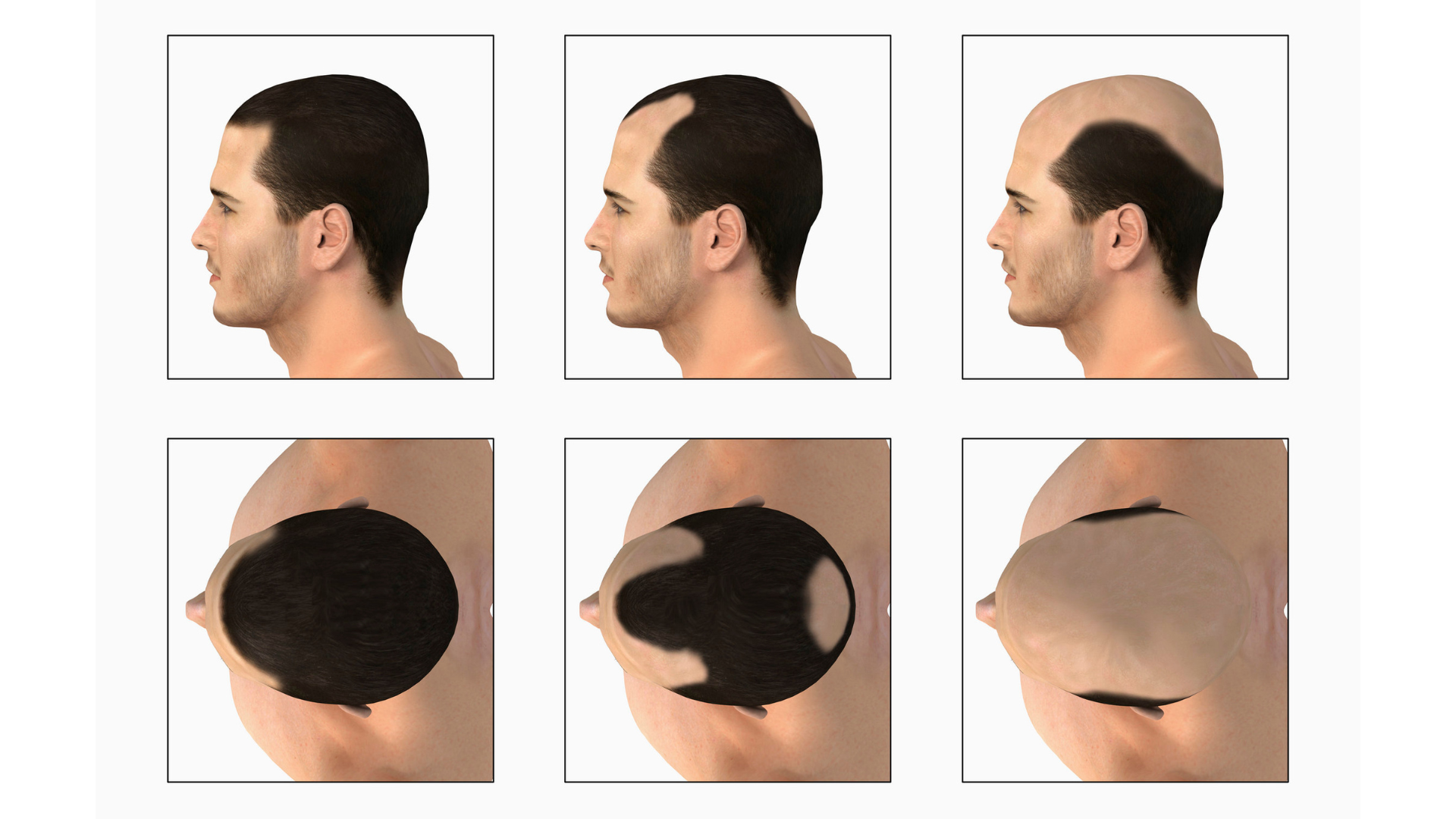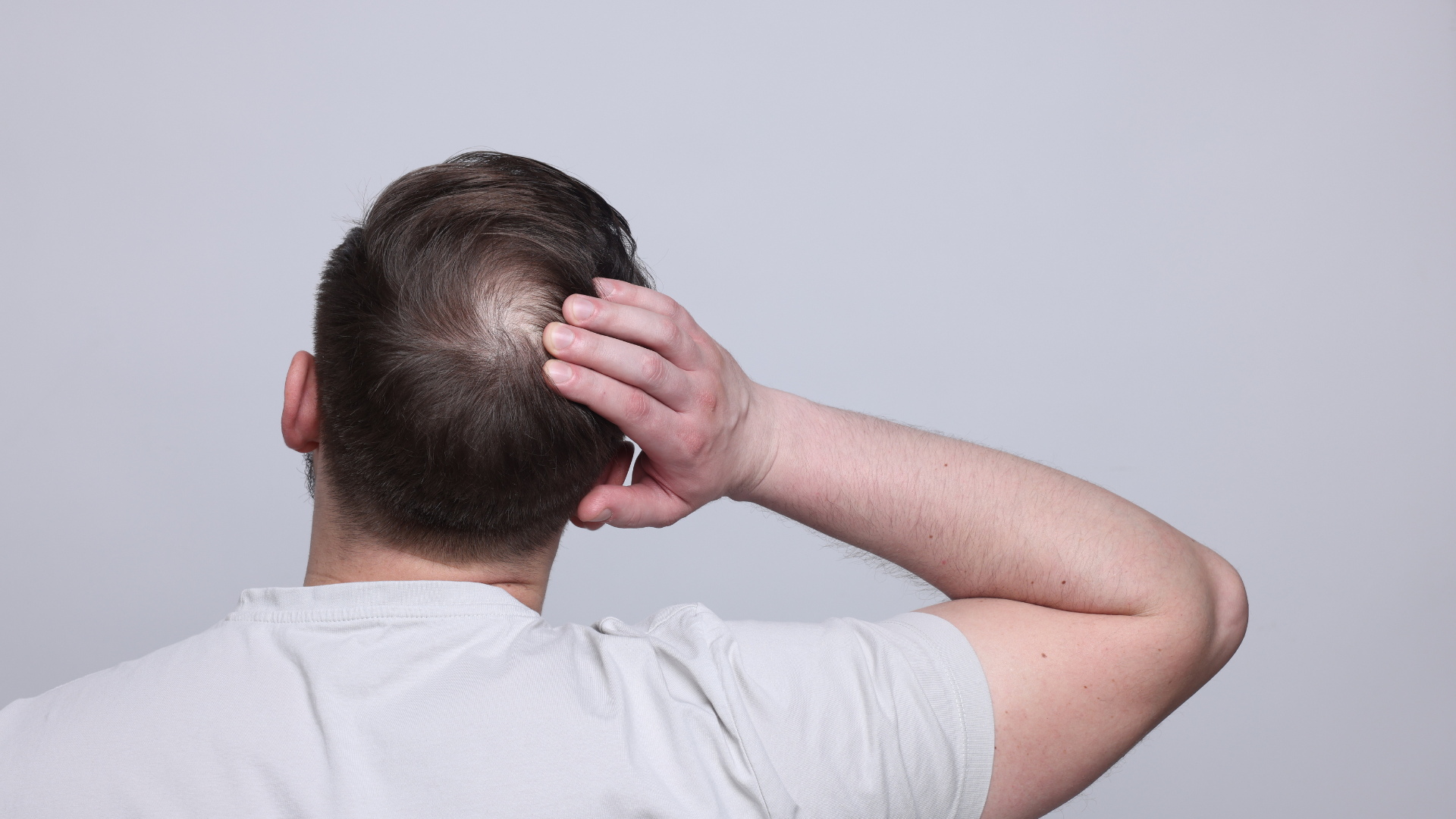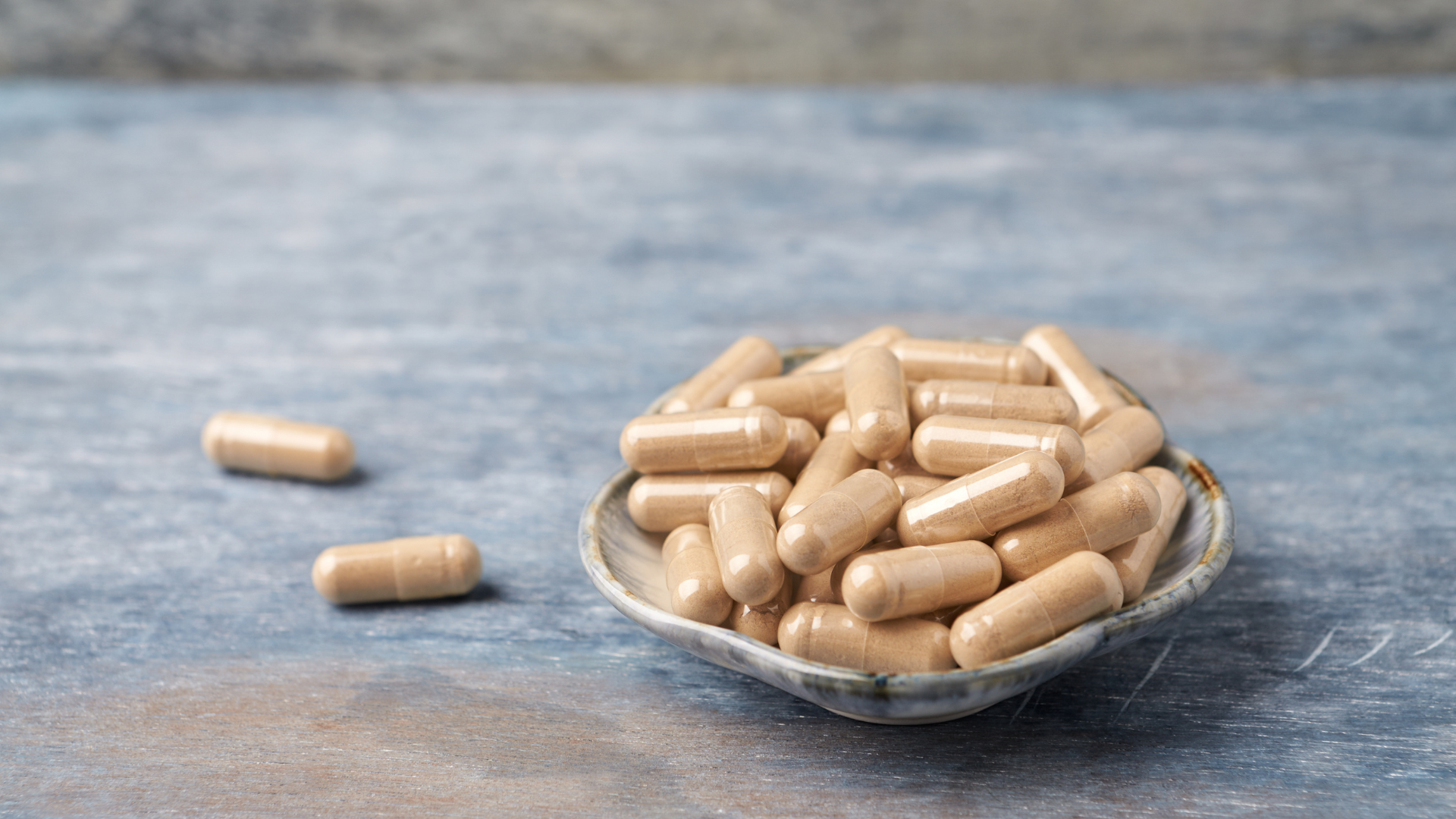Did you know that 85% of men will experience significant hair loss by age 50? If you're looking for natural solutions, ashwagandha might be the answer you've been searching for! This ancient herb has been making waves in the hair loss community, and I'm excited to share the fascinating science behind its potential benefits for male pattern baldness.
Understanding Male Pattern Baldness and DHT
Let me break down the whole DHT and hair loss connection in a way that finally made sense to me after years of research. When I first started losing my hair in my mid-thirties, I was pretty confused about what was actually happening up there on my scalp.
DHT (dihydrotestosterone) is basically testosterone's more potent cousin. While testosterone is crucial for our overall health as men, when it converts to DHT through an enzyme called 5-alpha reductase, it can become a real problem for those of us genetically predisposed to male pattern baldness.
Here's what I learned from my dermatologist: DHT binds to receptors in our hair follicles, and if you're sensitive to it (thanks, genetics), it starts shrinking those follicles over time. This process is called miniaturization - your thick, healthy hair gradually becomes thinner and wispier until the follicle eventually stops producing hair altogether.

According to a study published in the International Journal of Trichology, about 50% of men will experience some degree of androgenetic alopecia (the fancy term for male pattern baldness) by age 50. The kicker is that DHT doesn't affect everyone the same way - some guys can have high DHT levels and keep their full head of hair, while others start thinning in their early twenties.
It typically starts at the temples and crown, forming that classic M-shaped recession we're all familiar with. This happens because these areas are particularly sensitive to DHT, while the hair on the sides and back of our heads tends to be more resistant.
The whole DHT situation gets even more interesting when you consider that this same hormone is actually beneficial for other parts of our body - it plays a role in muscle development and sexual function. So it's not about eliminating DHT completely, but rather managing its effects on our scalp when it becomes problematic.
Common Treatments for DHT-Related Hair Loss
The most common conventional treatment you'll encounter is finasteride (Propecia), which works by blocking the enzyme that converts testosterone to DHT. According to a study published in the Journal of the American Academy of Dermatology, about 83% of men taking finasteride maintained or increased their hair count over a 2-year period.
Another popular option is minoxidil (Rogaine), which I actually tried for about six months. It's a topical solution that increases blood flow to the scalp. While it helped with some regrowth around my temples, the twice-daily application routine was kind of a pain to maintain.

On the natural side of things, saw palmetto has shown promise as a DHT blocker. I've combined it with other treatments in my regimen. Some guys also swear by rosemary oil - there's actually some decent science behind it. A 2015 study in the Skinmed Journal found it to be as effective as 2% minoxidil.
These days, I take a multi-pronged approach: using a DHT-blocking shampoo, taking supplements like biotin and, yes, incorporating ashwagandha into my routine. While ashwagandha isn't a direct DHT blocker, its stress-reducing properties can help with stress-related hair loss, which often compounds the DHT issue.
How Ashwagandha Affects Hair Loss
The main way ashwagandha affects hair loss is through its impact on cortisol levels. According to a study published in the Indian Journal of Psychological Medicine, ashwagandha can reduce cortisol levels by up to 30%. This matters because high cortisol levels can trigger DHT production - that pesky hormone that's primarily responsible for male pattern baldness.
But there's more to it than just cortisol regulation. Ashwagandha contains compounds called withanolides, which have been shown to stimulate DHEA production - a hormone that can help counteract some of DHT's harmful effects on hair follicles. I've seen this mentioned in several research papers, but one particularly compelling study in the Journal of Alternative and Complementary Medicine really drove this point home.

The herb also works as a potent antioxidant. When I first learned about this mechanism, it honestly seemed too simple to be true. But free radical damage can seriously mess with your hair follicles, and ashwagandha's antioxidant properties help protect them from oxidative stress.
One of the most interesting aspects I've discovered is how ashwagandha improves blood circulation to the scalp. Better blood flow means more nutrients reaching your hair follicles. This process is enhanced by the herb's anti-inflammatory properties, which can help reduce scalp inflammation - a common but often overlooked factor in hair loss.
Additionally, ashwagandha has an ability to boost melanin production. Melanin isn't just about hair color; it also plays a role in protecting hair follicles from damage. While researching this, I came across a fascinating study in the Journal of Ethnopharmacology that detailed this mechanism.
Using Ashwagandha for Hair Loss Prevention
First off, I found that consistency is absolutely key. Through trial and error, I discovered that taking 600mg of ashwagandha root extract daily, split into two 300mg doses, works best for me. I take one dose in the morning with breakfast and another before bed. This dosing schedule aligns with research published in the Journal of Ethnopharmacology, which suggests consistent intake for optimal results.

Remember, results don't happen overnight. It took about 3-4 months of consistent use before I noticed any changes in my hair's thickness and reduced shedding. This lines up with a 2012 study that showed significant improvements in stress-related parameters after 60 days of regular ashwagandha supplementation.
I combine my ashwagandha supplementation with scalp massage using warm coconut oil infused with ashwagandha powder. I do this twice a week, leaving it on for about 30 minutes before washing. While there's limited scientific evidence for topical application, I've noticed my scalp feels healthier and less irritated since starting this routine.
Recommended Dosage and Forms
Let me break down the main forms you'll find. The most common is ashwagandha root powder, which typically comes in capsules. I personally prefer the KSM-66 extract, which is a highly concentrated form backed by several clinical studies. You can also find it as a liquid extract or in powder form to mix into smoothies, though I found the taste pretty earthy and hard to mask.
For dosage, research suggests that 300-600 mg of ashwagandha root extract taken twice daily is optimal for addressing hair loss concerns. A study published in the Journal of Alternative and Complementary Medicine found that this range was effective for reducing stress levels, which can impact hair health.
Pro tip: Store your ashwagandha supplements in a cool, dry place. I once left mine in a humid bathroom cabinet, and they clumped up pretty badly. Not the end of the world, but definitely not ideal for maintaining potency.
Complementary Treatments
While exploring solutions for my own hair loss journey, I've discovered that combining ashwagandha with other natural treatments can create a more comprehensive approach. Let me share what's worked for me and what research suggests about complementary treatments.
First off, I've had great results pairing ashwagandha with saw palmetto. According to a study published in the Journal of Clinical and Experimental Dermatology Research, saw palmetto can help block DHT, the hormone responsible for male pattern baldness. I take 320mg daily, and it seems to work synergistically with my ashwagandha routine.
On the lifestyle front, I learned the hard way that stress management is crucial. I used to pull all-nighters at work, and my hairline definitely paid the price. Now, I meditate for 15 minutes daily and hit the gym three times a week. The exercise boost testosterone naturally, which some studies suggest may help with hair growth when combined with adaptogenic herbs like ashwagandha.
Here's something most people don't talk about - your scalp care routine matters just as much as supplements. I've started using a derma roller once a week (1.5mm needle length), and it's been a game changer. Research from a 2013 study in the International Journal of Trichology showed that microneedling combined with traditional hair loss treatments improved results significantly.
Diet-wise, I've added foods rich in biotin and omega-3s. Think salmon, eggs, and nuts. I noticed my hair feeling thicker after about three months of consistent healthy eating. Pro tip: don't waste money on biotin supplements if your diet is already solid.
Who Should Avoid Ashwagandha
While ashwagandha has numerous benefits, I've learned through my research and consultations with healthcare providers that it's not suitable for everyone. In my years of studying natural supplements, I've come across several important contraindications that people should be aware of.

First, let's talk about medical conditions. If you have an autoimmune disease like rheumatoid arthritis, lupus, or multiple sclerosis, you should avoid ashwagandha. According to a study published in the Journal of Alternative and Complementary Medicine, ashwagandha can stimulate the immune system, potentially making these conditions worse.
When it comes to medication interactions, ashwagandha can be tricky. It may interact with several types of medications, including:
- Blood pressure medications
- Thyroid medications
- Immunosuppressants
- Sedatives and anti-anxiety medications
For those planning to start a family, here's something important: pregnant and breastfeeding women should steer clear of ashwagandha. A 2020 review in the Journal of Ethnopharmacology indicated that ashwagandha might cause early delivery and other pregnancy complications.
Also, if you're scheduled for surgery, stop taking ashwagandha at least two weeks before. It can interfere with anesthesia and blood clotting.
Remember, natural doesn't always mean safe for everyone. When in doubt, consult with a healthcare professional who knows your medical history. They can help determine if ashwagandha is right for you.
Summary
While ashwagandha shows promising potential for managing male pattern baldness through its DHT-blocking and stress-reducing properties, it's important to maintain realistic expectations. Consider incorporating this natural remedy as part of a comprehensive hair loss prevention strategy, and always consult with a healthcare provider before starting any new supplement regimen.



